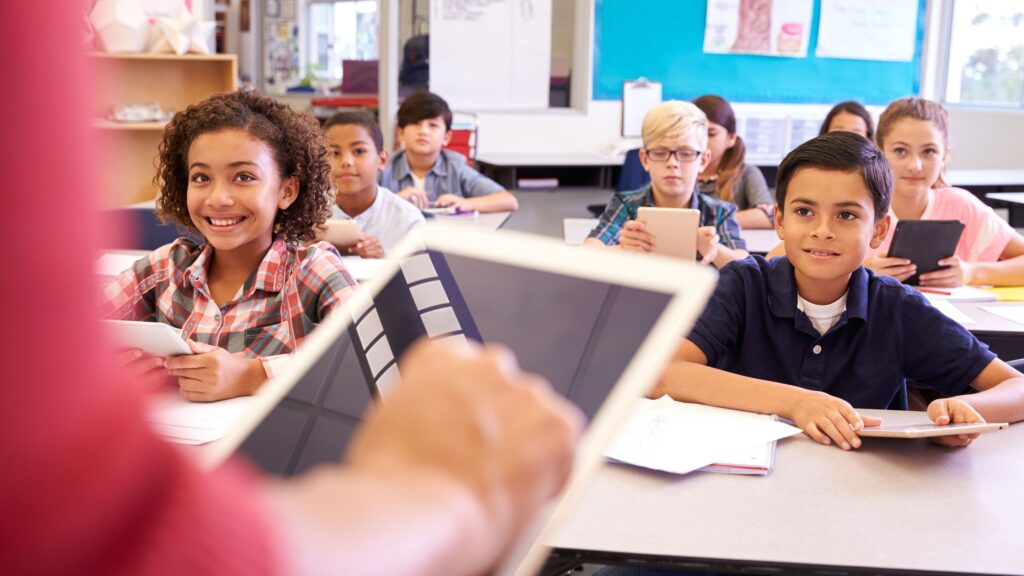
Even though many teachers think of technology as nothing but a distraction in class, today’s students can’t even imagine going to school without Google. Nowadays, students have access to advanced technologies that can help enhance their learning experience and adopt new skills more quickly.
Today’s technology has enormous potential to take education to the next level, although some teachers still ban smart devices in their classrooms. The question is, should technology be allowed during school hours? To clear some air on this topic, here are six ways technology can help students in learning and improving their skills and thinking processes.
1. Better Access to Resources

We will start with the most apparent advantage that technology provides, and that is easy access to countless academic resources. The internet puts all the world’s information right at our fingertips. Students no longer have to waste time searching for information in books and massive libraries. Instead, they can look things up in less than five seconds and have access to more resources than it was ever possible in history.
Easy access to research materials and educational apps makes learning a much more enjoyable process. However, schools should teach students how to find credible information online because not all sources are trustworthy. Moreover, students can use VPN (virtual private network) services to unlock access to information from different regions of the world and gain more insight on the topics in question. Better access to resources makes technology well worth it in the educational sector. In addition, a reliable VPN provides an extra layer of security and privacy.
Click Here to Learn More: https://nordvpn.com/what-is-a-vpn/
2. Better Communication/Collaboration Abilities

Access to smart devices and the internet allows students to take group learning to the next level. With the current online school system set in place, there is no doubt that the internet has saved the day for educational facilities and students around the world. There are countless apps and online platforms designed specifically for student communication and collaboration on shared projects.
Thanks to such platforms, students can collaborate in real-time and work on projects from multiple locations. Moreover, this technology can work both ways since teachers and instructors can provide materials and distribute tasks online. Easier communication leads to better learning experiences, which is what students around the world are looking for.
3. Improving Engagement

With attention spans becoming shorter and shorter, students are quickly losing interest in their subjects and materials they should be studying. While the internet could be at fault here because of its reputation as the major distraction, it can also serve as a tool to help engage students on a deeper level.
Online tools and activities such as quizzes, group discussions, educational games, and virtual labs can encourage students to learn through action. It is well known that we are much more likely to learn something by doing rather than just reading. That is why these augmented reality solutions, games, and animations can serve as a good way to keep the students engaged.
AI and VR solutions play an important role in medical education, where hands-on experience is crucial in the learning process. By using virtual reality, students can comprehend complex topics more easily and gain valuable insights into important subjects such as human anatomy.
4. Inviting Experts

One of the best advantages that online technologies bring to the classroom is the ability to virtually welcome guests and experts to contribute to the learning experience. This allows students to connect with experts in their field and learn by listening to real-life stories and experiences that can enhance their knowledge. Teachers can use this opportunity to introduce more diversity in their curriculum and keep the students interested and engaged.
For example, biology students can learn directly from biology experts from other regions who can show them plants and specimens that are not common in their areas. Regardless of the topic, students can benefit from direct experience and insight provided by experts in their field. Online technologies and video conferencing platforms can take this type of collaboration to the next level, especially in educational environments.
5. Self-Paced Learning

Furthermore, new technologies allow students to engage in self-paced learning without dealing with the pressure of performing the way everyone else does. Not everyone learns at the same pace, which is perfectly normal and understandable. With online learning platforms that feature integrated cloud storage, students no longer have the pressure to complete their tasks at the same time their peers do.
Instead, they can take the freedom to follow their own pace, which is very beneficial to the overall learning experience. Teachers can provide online assignments and guided exercises for students who need extra time to adapt and catch up. On top of that, students will be practicing their digital literacy skills, which are some of the most important skills in the 21st century. The ability to shuffle between digital platforms and assess resources can be valuable for the student’s portfolio.
6. Effective Assessment

Last but not least, online learning platforms and technologies can improve the quality of student assessment. Teachers can use digital assignments and models to keep track of their student’s work, from tracking attendance to the rates at which they complete their schoolwork. Many software solutions allow real-time assessment as a way for teachers to understand their students’ capabilities on a deeper level.
With better assessment data at hand, teachers can help each student individually based on their performance and skill levels. This kind of personalized learning experience will have a more positive impact on the students’ mindsets and habits, and their long-term success.
Learning Through Interaction

Overall, online technologies have proven to be a real savior during these challenging times. Without online tools such as Zoom and other collaboration platforms, the schooling system would have no way of keeping the students engaged from home. Quarantined or not, students can benefit from all the advantages that new technologies provide.
Even though there are concerns that the internet is too distracting for students to work with, it is also one of their most valuable assets during their learning experience. Therefore, as long as teachers provide their students with interesting and engaging online learning opportunities, there should be no reason why technology shouldn’t be implemented in classrooms.
Further development of artificial intelligence and virtual reality solutions will open more doors for interactive learning based on new technologies. Therefore, instead of banning smartphones in their classrooms, teachers worldwide should start using them to their advantage. After all, the integration of high-end technologies can make learning more appealing to students of all ages.








